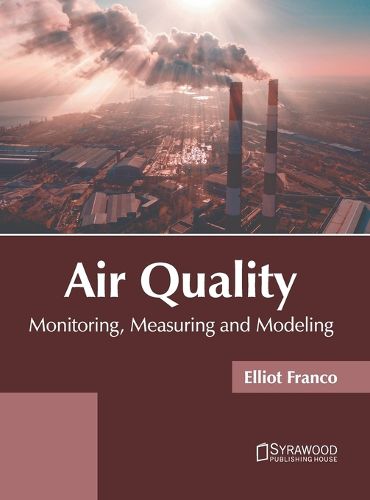Readings Newsletter
Become a Readings Member to make your shopping experience even easier.
Sign in or sign up for free!
You’re not far away from qualifying for FREE standard shipping within Australia
You’ve qualified for FREE standard shipping within Australia
The cart is loading…






Air quality monitoring refers to a process which involves taking samples and performing tests of air emissions. It aids in measuring the quality of air in relation to pollutants in a given time duration. Furthermore, it also helps to evaluate whether the quality of air is deteriorating or improving through the assessment of patterns and trends. It involves a systematic and long-term evaluation of pollutant levels in the surroundings, by determining the quantity and types of contaminants in the air. Air quality is measured using an index called the air quality index (AQI). An AQI of 50 or less is considered good whereas AQI above this level is unhealthy and may result in health issues. AQI helps in measuring the level of different pollutants that are present in the atmosphere, namely, particulate matter (PM10), particulate matter (PM2.5), nitrogen dioxide (NO2), sulfur dioxide (SO2), carbon monoxide (CO), ozone (O3), ammonia (NH3), and lead (Pb). The modeling of air quality is done using computer programs and mathematics for estimating pollutant concentrations in the air. Systems for assessing and forecasting air quality help the decision makers in improving public health and air quality. This book contains some path-breaking studies on air quality monitoring, measuring and modeling. It will serve as a reference to a broad spectrum of readers.
$9.00 standard shipping within Australia
FREE standard shipping within Australia for orders over $100.00
Express & International shipping calculated at checkout
Air quality monitoring refers to a process which involves taking samples and performing tests of air emissions. It aids in measuring the quality of air in relation to pollutants in a given time duration. Furthermore, it also helps to evaluate whether the quality of air is deteriorating or improving through the assessment of patterns and trends. It involves a systematic and long-term evaluation of pollutant levels in the surroundings, by determining the quantity and types of contaminants in the air. Air quality is measured using an index called the air quality index (AQI). An AQI of 50 or less is considered good whereas AQI above this level is unhealthy and may result in health issues. AQI helps in measuring the level of different pollutants that are present in the atmosphere, namely, particulate matter (PM10), particulate matter (PM2.5), nitrogen dioxide (NO2), sulfur dioxide (SO2), carbon monoxide (CO), ozone (O3), ammonia (NH3), and lead (Pb). The modeling of air quality is done using computer programs and mathematics for estimating pollutant concentrations in the air. Systems for assessing and forecasting air quality help the decision makers in improving public health and air quality. This book contains some path-breaking studies on air quality monitoring, measuring and modeling. It will serve as a reference to a broad spectrum of readers.